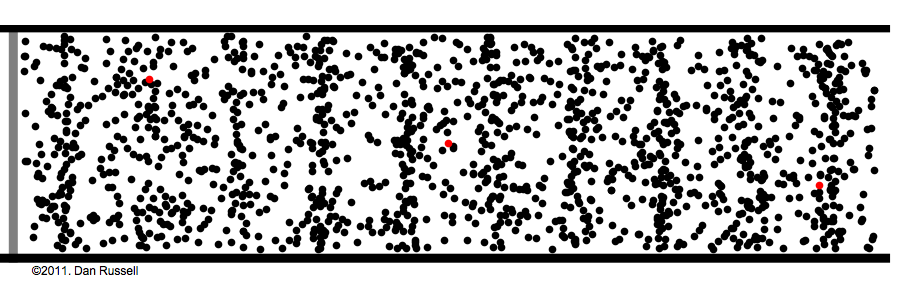...
This is a beginner's beginner guide to vacuum theory . Into to vacuum Theory aims to that reach a broad audience by using brief, informal descriptions and avoiding the use of math or units; science background not needed. It incrementally introduces some of the concepts and language used in vacuum technology. Hopefully this lays , hopefully laying a solid groundwork for future learning.
This training document starts off zoomed out and oversimplified, and . It builds off itself as it goes, using vocab defined earlier to help define newer terms. It ends, still zoomed out and oversimplified, but though less so. So take note: these topics run much, much deeper than described within this documenthere; further discussions discussion can be found within the other pages of LCLS Vacuum Support Training, within textbooks, and most of all within your coworkers (go talk with them!).
...
as pressure drops, mean free path increases, because there are less molecules to run into. This effects the behavior of gasses, discussed below:
Pressure waves: pump up the bass
...
What we're used to: Atmospheric Pressure
Hold your hand a few inches in front of your mouth a few inches mouth away and say "pump". Do you feel that air hitting your hand? Try saying "pump" again with your hand farther away. How far can you get and still feel the "p"?
Here's another example: sound
...
How many molecules was that? were all of the molecules that hit your hand from your mouth/lungs? The first molecules to hit your hand were already between your mouth and you hand when your
Under normal atmospheric conditions– gas molecules are constantly running into each other and bouncing off. This is how sound waves work:
Sound is waves of rapid pressure change, and no molecules need to travel from the speaker to the ear for us to hear. See the red dots in the above animation. The speaker pushes some molecules into motion, that hit the next molecule in the way, that again hit the next, and so on and so forth—It's like dominoes.
In fact, when you blow out a candle it's not the molecules from your lungs that put out the flame, there are too many air molecules in the way; your lung-air molecules merely instead knock forward the air molecules in front of your mouth, which and those molecules knock forward the air molecules above the cake, which in turn knock the air molecules in the flame away from the wick, taking their heat with them, and extinguishing the flame.
Though if you keep blowing those lung air-molecules will
...
And pumps create suction in just the opposite way: remove some molecules and the ones next to it fall into the void, leaving their own void behind them, which gets filled by other molecules, and so on and so forth. This domino-chain like behavior is called viscous flow, and it's what we're used to.
...




